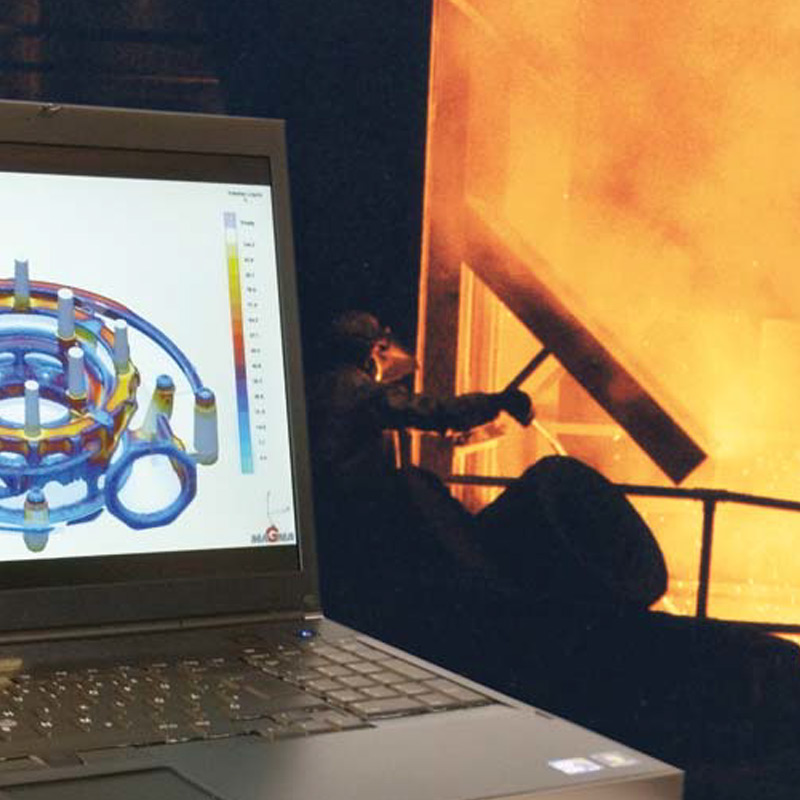Energy and raw material savings in foundries through thorough utilization of simulation
Jörg C. Sturm, MAGMA Giessereitechnologie GmbH, Aachen Germany
Christof Heisser, MAGMA Foundry Technologies, Inc., Schaumburg/IL USA
Abstract
Foundries are “world champions“ in effectively recycling their materials. More than 90% of all cast parts are made from re-melted scrap metal. But it doesn’t stop with the metal: molding materials (sand) and water are efficiently re-used, leading to almost no waste.
Nevertheless, the costs for energy and materials in foundries are in average responsible for 40% of all costs – as high as expenditures for personnel. Melting and solidifying metals require a high amount of energy. Physical laws determine an average energy input of 2,000 kWh per metric ton of final casting product. This adds up to a total energy consumption of 11 billion kWh of the German foundry industry per year. Over 50% of this energy is not used for the final casting itself, but is used for gating and risering systems, which are necessary to route the metal to and into the cavities that later contain the final castings. The gating and riser system also provides material to the casting during the solidification process to counteract the volume difference between the liquid and solid state of the metal, thereby eliminating shrinkage defects.
It is exactly here, where casting process simulation provides an indispensable contribution: simulation allows the foundry engineer to design a gating and riser system at the physical and technological optimum before the first casting is poured. It achieves energy savings in two ways: firstly through minimization of the needed amount of material and, secondly, through the related reduction in energy use for the melting process.
Additional important contributions of simulation regarding energy efficiency and the related CO2-emission reduction are found in the reduction of the process and cycle times in the production of high production castings. It is used to optimize the necessary heat-up process and temperature distribution of permanent molds, as well as finding the pattern layout with the maximum numbers of parts. Throughout the entire production, simulation is also reducing energy consumption, as it is used to reduce the amount of molding material, improve shakeout conditions, and eliminate cleaning and rework including repair welding. Significant indirect energy savings are accomplished by reducing or eliminating trial and error runs prior to the final production run.
Therefore, the energy and raw material efficiency of a foundry can be significantly improved through the utilization of casting process simulation. The following examples from foundries will demonstrate how simulation contributes solutions to questions raised in the current CO2-Discussion.
Please read the complete publication in the linked PDF.
Read Publication: Energy and raw material savings in foundries through thorough utilization of simulation
